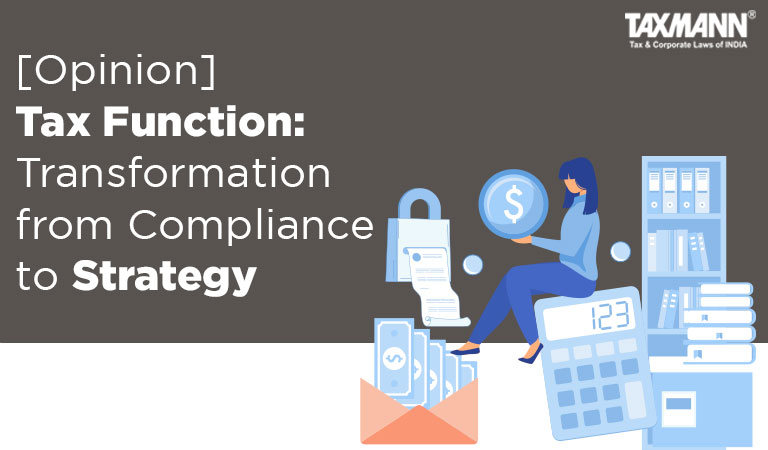[Opinion] Tax Function: Transformation from Compliance to Strategy
- Blog|News|Income Tax|
- 2 Min Read
- By Taxmann
- |
- Last Updated on 10 November, 2022

Pritin Kumar, Dilip Sutar & Roma Kothari – [2022] 144 taxmann.com 148 (Article)
The role of tax professionals in an organisation has transformed significantly in the past decade and is still ongoing. From a predominant focus on compliance in the past, tax functions are increasingly involved in strategic business initiatives and decision-making. This paradigm shift in the role of a tax function from compliance to strategy has been enabled by automation and use of technology.
In today’s world, businesses are transforming pursuant to innovative technologies at their disposal. The objectives and uses of technology could range from automation of standard processes to achieve speed, accuracy, and reliability, to advanced analytics and beyond. The same applications and objectives apply equally to the tax function in an organisation.
The tax function is witnessing a significant transformation in tax compliances and processes. The catalyst for this has been the proactive government drive towards automation and in building an entire ecosystem around tax technology. In the last couple of decades, manual filings have gradually been replaced with electronic filings. The challenges in extraction of data from ERPs, reconciliation of data, churning of data and putting data together in the requisite format, are being reduced, pursuant to automation. Repetitive tasks can now be performed by BOTs using Robotic Process Automation; artificial intelligence/machine learning are being used for complex issues.
While there are several outcomes to the use of technology such as automation of tasks leading to speed, accuracy, etc., there are two which are especially noteworthy:
(i) availability of time for tax professionals as they spend lesser time on compliance; and
(ii) insights available to the tax function from the use of analytics.
The use of technology obviously makes life easier for tax professionals, but these two outcomes lead to an overall transformation of the tax function.
If in the 2000s, one asked a tax manager to describe her or his job profile, the typical answer would be collation of data, reconciliation, filing of returns, audits by tax authorities, appeals, etc. Of course, the tax manager looked at strategic matters as well, but, 80 to 90% of their time was typically spent on tax compliance and litigation. With automation, the time spent on compliance and litigation is reducing to 45-50%, with the potential to go further down to 10-15%. This time available to a tax manager can be now gainfully utilised on strategy.
The other outcome of automation and technology is the insight generated based on data. Data visualisation tools and predictive and prescriptive analytics, which were not available to the tax function a decade ago, have enabled tax professionals to harness data and contribute in a meaningful way to business decision-making.
Click Here To Read The Full Article
Disclaimer: The content/information published on the website is only for general information of the user and shall not be construed as legal advice. While the Taxmann has exercised reasonable efforts to ensure the veracity of information/content published, Taxmann shall be under no liability in any manner whatsoever for incorrect information, if any.

Taxmann Publications has a dedicated in-house Research & Editorial Team. This team consists of a team of Chartered Accountants, Company Secretaries, and Lawyers. This team works under the guidance and supervision of editor-in-chief Mr Rakesh Bhargava.
The Research and Editorial Team is responsible for developing reliable and accurate content for the readers. The team follows the six-sigma approach to achieve the benchmark of zero error in its publications and research platforms. The team ensures that the following publication guidelines are thoroughly followed while developing the content:
- The statutory material is obtained only from the authorized and reliable sources
- All the latest developments in the judicial and legislative fields are covered
- Prepare the analytical write-ups on current, controversial, and important issues to help the readers to understand the concept and its implications
- Every content published by Taxmann is complete, accurate and lucid
- All evidence-based statements are supported with proper reference to Section, Circular No., Notification No. or citations
- The golden rules of grammar, style and consistency are thoroughly followed
- Font and size that’s easy to read and remain consistent across all imprint and digital publications are applied



 CA | CS | CMA
CA | CS | CMA
